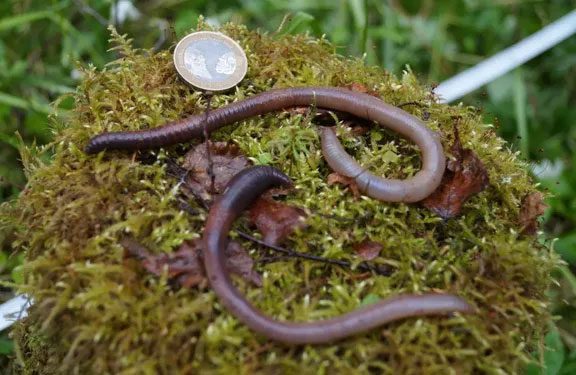These tiny creatures in the ground turned out to be the first animals to survive and revive after Earth’s mass extinction disaster.
Life on Earth was devastated by the mass extinction at the end of the Permian period, 252 million years ago. This event, the largest mass extinction in the planet’s history, wiped out over 90% of animal and plant species. It took millions of years for biodiversity to return to pre-extinction levels.
By examining trails and caves on the seabed of the South China Sea, a group of international scientists discovered that burrowing animals like worms and shrimp were the first to revive after this catastrophic event.

After the mass extinction, worms and shrimp were the first species to revive after this catastrophic event.
Co-author of the study, Michael Benton, a vertebrate paleontologist at the University of Bristol, stated: “The end-Permian mass extinction and the recovery of life in the Triassic period have been well-documented across southern China. We were able to examine fossil traces from 26 areas throughout the entire sequence of events, representing 7 million years and displaying details at 400 sampling points. Ultimately, we reconstructed the recovery phases of all animals, including benthic organisms, nekton, and burrowing marine mollusks.”
According to Professor Benton and his colleagues, rising temperatures and prolonged oxygen deficiency coincided with the transition between the Permian and Triassic periods. During this time, biodiversity appeared to be very low due to a lack of conditions supportive of life. It took over 3 million years for mollusks to begin reviving.
Alison Cribb, a PhD researcher in Geobiology at the University of Southern California and co-author of the study, explained: “The first animals to revive were deposit feeders like worms and shrimp, along with pelagic organisms such as arthropods, bryozoans, and bivalves.”
These findings indicate that mollusks had the best resilience to increasing CO2 levels and the rapid warming of the Earth.
The lead author of the study, Xueqian Feng, a paleontologist at China University of Geosciences, concluded: “These ecosystem engineers played a role in the recovery of the seabed ecosystem after the mass extinction. They triggered innovations and evolutionary radiations in the early Triassic period thereafter.”
The research was published in the journal Science Advances.




















































